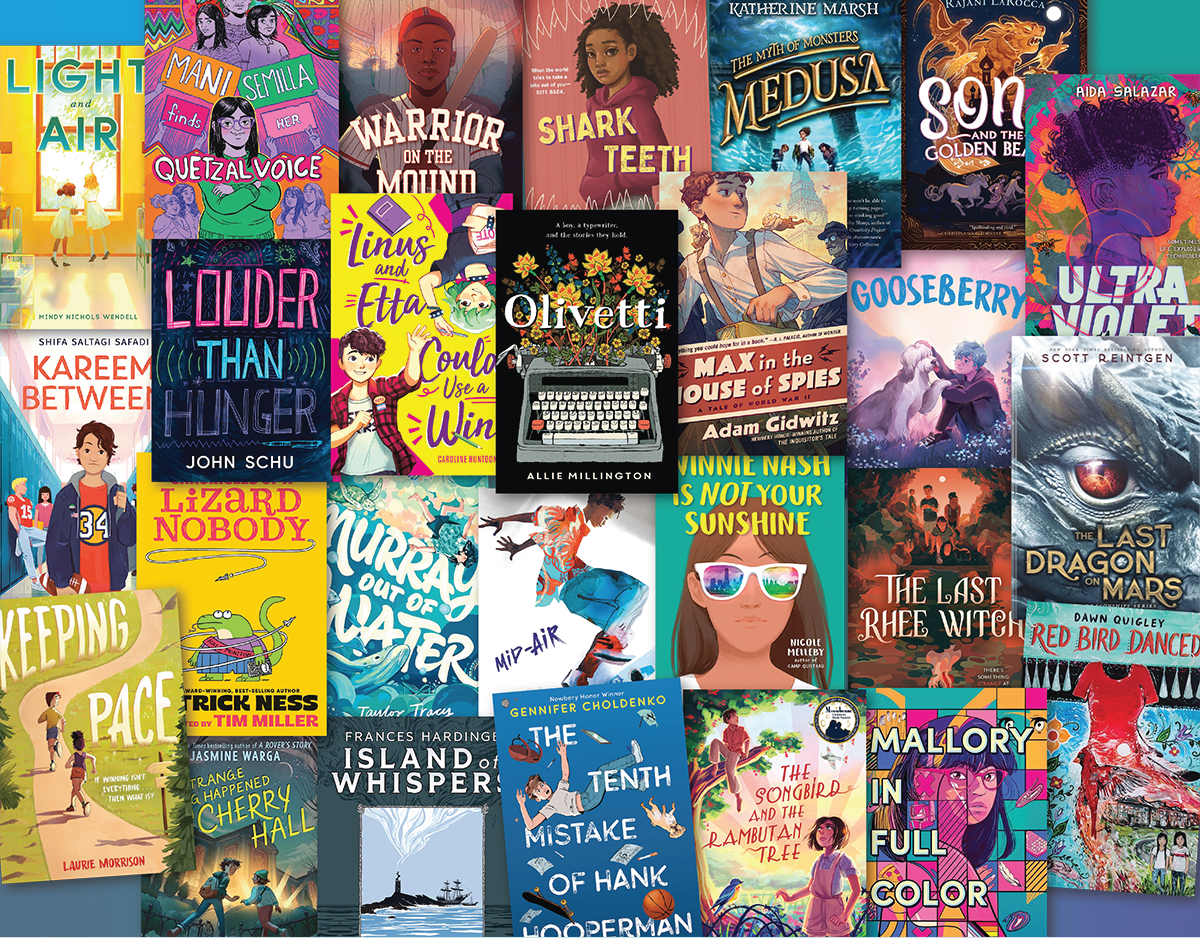Review of the Day: Chains by Laurie Halse Anderson
 Chains
Chains
By Laurie Halse Anderson
Simon & Schuster
$16.99
ISBN: 978-1-4169-6949-5
Ages 10 and up
On shelves October 21, 2008
My discovery of Laurie Halse Anderson’s Chains came at the best possible time. I had recently read and reviewed Steve Sheinkin’s, King George, What Was His Problem?, a book that looks at the stories behind the American Revolution that they don’t teach you in school. I enjoyed the title thoroughly, but one point had me baffled. Why on earth did American slaves fight or aid the Revolution when Britain was anti-slavery? It just didn’t make any sense. It reminded me of that black character on the kids’ show Liberty’s Kids and my husband asking, “So… is he insane?” And up until now no book written for kids, fiction or informational, has ever really addressed this question to my satisfaction. Enter Laurie Halse Anderson. As she says of the book, “A decade ago, while researching Fever, 1793, I came across facts that shocked me; that Benjamin Franklin owned slaves, that twenty percent of New York City in 1776 was held in bondage, and that the Revolution was not fought for the freedom of all Americans.” The result of this shock is Chains, a complex but kid-friendly look at the Revolutionary War through the eyes of a Loyalist’s slave. As Anderson says in her Author’s Note at the end, “you really can’t look at this through good guy/bad guy glasses.” So it is that you end up with a book that is nuanced, historically accurate within an inch of its life, and infinitely readable.
They were supposed to be free. That was the promise that old Miss Mary Finch made to Isabel and her little sister Ruth before she died. She even put it in writing, though the man who wrote it up for her departed before her death, leaving no proof. Now the sisters have been sold to the Lockton household and things look bad. The Locktons are Loyalists living in New York City, and soon Isabel finds that the island itself makes for an ideal prison from which escape is near impossible. With the Revolutionary War beginning and England taking over the city, Isabel is torn between aiding the Colonists or the Loyalists. Both sides fail to take slaves into account, using them as tools rather than people. To find her own way Isabel must use her head and determine whom it is that she can trust and how to use what little power she has. Each chapter begins with a quote from a real person or advertisement during this time period. An Author’s Note at the end provides additional details, source notes for further reading, and clarifications on tricky points.
ADVERTISEMENT
ADVERTISEMENT
I wanted to start off here with something along the lines of “Well, of course the writing is good,” but maybe that’s not the given I think it is. Maybe you haven’t read a Laurie Halse Anderson book before. Or maybe you did but it was a long time ago and somehow you’ve managed to conflate her in your mind with fellow revolutionary author M.T. Anderson. Maybe I shouldn’t go about assuming that you are familiar then with her wordplay and wit then. Take as one such example a moment when Isabel discovers that her mistress has done the unthinkable. Anderson writes, “She did not look into my eyes, did not see the lion inside. She did not see the me of me, the Isabel. I saw her. I saw all the way down to her withered soul.” That’s just a taste, but you get the picture. Anderson accomplishes the unenviable task of having to write someone in a helpless position who can somehow remain strong in spite of the odds. On top of that she fills her tale with likeable and unlikeable characters together. Yet every person here, no matter how briefly they flit across the page, has a story. My husband is fond of saying of people that “they only want what they want.” In other words, everyone has their own number one prerogative in mind. They’re all looking out for number one. What makes Isabel such a stunning protagonist and hero is that in spite of the odds and her trials, she is able to look out for other people even in the midst of her own wants and needs.
Anderson also knows how to write a good villain. Mrs. Lockton is systematic in her abuse, and perfectly created as well. A two-dimensional villain is something you see in children’s books every day, but Anderson is clever enough to give Madam a little more depth than that. She is herself abused by her husband, and one chapter begins with an unsigned Colonial-Era letter that reads, “Among all the species and degrees of slavery that have excited the attention of mankind . . . there is perhaps none more pitiable than that of the ill-sooted Wife.” It is not an excuse for what she does to the people she owns, but at least you understand her nastiness a little better.
Of course, there are some portions in this book where not a lot happens and you find yourself waiting for the next event to take place. For much of the story Isabel has to remain a kind of static character. When she does take matters into her own hands while in the thrall of anger, it can lead to problems. So for a while she has to bide her time and you, the reader, are biding right alongside her. This accounts for some of the sections in the center of the novel where we have to get a little overheard exposition to know what’s going on in the state and the country. Fortunately the stakes are hoisted up beautifully after that and the storyline proceeds at a bracing clip.
That each chapter begins with a real-life quote makes for a beautiful dichotomy. On the one hand you have the Continental Congress saying, “The time is now near at hand which must probably determine, whether Americans are to be, Freemen, or Slaves,” and on the other you have Isabel nearly dying on us all thanks to actual slavery. These quotes become their own counter-narrative. Fiction is often limited by the fact that if you’re writing in the first-person you’re only really getting one point of view. Unless a character eavesdrops on others (or, in the case of this book, is almost invisible to them) they can’t get alternative voices. So when you enter in quotes from the day from the Revolutionaries, you remember all the other stories being told during this time in history. Without them you wouldn’t be able to place Isabel’s dilemma, and the dilemma of all the New York slaves of this time period, in history. Thus does Anderson give everyone a voice without sacrificing that of her main character.
I’ve heard the faint but unmistakable cry to “Replace schools reading Johnny Tremain with Chains!” It’s quiet at the moment, but I expect the movement to gather momentum any day now. Don’t get me wrong, I’m fond of Johnny Tremain too (didn’t Bart Simpson want to rename it “Johnny Deformed”?), but I don’t know that its historical accuracy and kid-friendly interest level can really compete with Anderson’s book. Chains disproves the notion that a children’s book written for the middle reader set can’t have complexity and interesting characters. Best of all, it’s a great read. Sucks you in and doesn’t spit you out until the very end. I look forward to the sequel (as there is bound to be one) and hope that this book gets into the hands of teachers everywhere as soon as possible. If you read only one piece of historical fiction from 2008, read this.
On shelves October 21st.
Notes on the Cover: Brilliant. Lizzy Bromley I kiss your tiny feet. This, ladies and gentlemen, is how you get around the whole “we want it to be accurate to the title but not announce that it’s historical fiction” problemo. First of all, I’m a little tired of covers with photographs of kids on them. I know that the prevailing wisdom states that children prefer to pick up books that have the faces of other kids on them. What I like about this cover is just how magnificently it clarifies the situation. There stands Isabel, her wrists almost chained by a parchment with the title on it. And then to have England and America represented by their various flag like birds . . . *kisses fingers to mouth*. I mean it… this is tops.
Other Blog Reviews:
Misc: On her blog (which is one of the best authorial blogs out there, mind) Ms. Anderson revealed the cover of the British edition of Chains. Interesting how they kept the featureless face.

Filed under: Best Books, Best Books of 2008, Reviews, Reviews 2008
About Betsy Bird
Betsy Bird is currently the Collection Development Manager of the Evanston Public Library system and a former Materials Specialist for New York Public Library. She has served on Newbery, written for Horn Book, and has done other lovely little things that she'd love to tell you about but that she's sure you'd find more interesting to hear of in person. Her opinions are her own and do not reflect those of EPL, SLJ, or any of the other acronyms you might be able to name. Follow her on Twitter: @fuseeight.
ADVERTISEMENT
ADVERTISEMENT
SLJ Blog Network
One Star Review, Guess Who? (#211)
Kevin McCloskey on ‘Lefty’ | Review and Drawn Response
Notable NON-Newbery Winners: Waiting for Gold?
The Seven Bills That Will Safeguard the Future of School Librarianship
Take Five: Newbery Picks, Part Two
Gayle Forman Visits The Yarn!
ADVERTISEMENT








That’s cool! It sounds like it captures some of the essence of Octavian Nothing, but toned down enough for younger readers.
this is one of my fav books it makes you so happy and it just wows you i love it and i am still a kid
this is one of my fav books it makes you so happy and it just wows you i love it and i am still a kid
wow